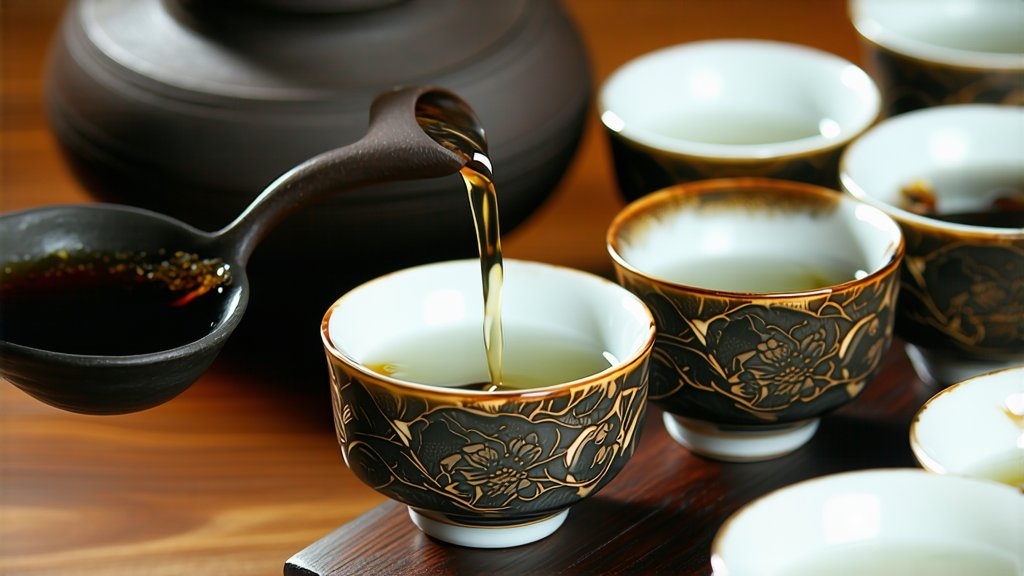
Pu-erh tea, a gem within the vast spectrum of Chinese black teas, holds a unique place in the world of tea due to its intricate production process, historical significance, and the depth of flavors it offers. Originating from the Yunnan province in China, this tea has captivated tea enthusiasts for centuries with its rich history, diverse varieties, and distinctive taste profiles that evolve over time through a natural aging process. In this exploration, we delve into the essence of Pu-erh tea, unraveling its origins, types, manufacturing techniques, and the art of its appreciation.
A Glimpse into History
The story of Pu-erh tea dates back over a thousand years, intertwining with the ancient tea horse road trade routes that connected Yunnan with Tibet and other regions. It is said that the discovery of Pu-erh's unique fermentation process was accidental, resulting from the long journeys these teas undertook. As caravans transported the tea across mountains and valleys, exposure to humidity and varying temperatures facilitated microbial activity, leading to fermentation and the development of complex flavors. This serendipitous finding laid the foundation for what would become one of the most revered teas in China.
Varieties of Pu-erh Tea
Pu-erh tea is broadly categorized into two main types: Raw Pu-erh (Sheng) and Ripe Pu-erh (Shou). Each variety undergoes a different post-fermentation process, influencing their flavor profiles and aging potential.
-
Raw Pu-erh (Sheng): Made from sun-dried green tea leaves, Sheng Pu-erh retains more of its natural characteristics and undergoes a slow natural fermentation process over time. This type is prized for its evolving flavor profile, which can range from fresh and vegetal when young to mellow and complex with hints of earthiness and sweetness as it ages.
-
Ripe Pu-erh (Shou): Shou Pu-erh undergoes a controlled fermentation process known as "wet piling," where piles of tea leaves are kept moist and warm to accelerate microbial activity. This results in a tea that is typically darker in color, with a smoother, mellower taste and a distinct earthy aroma even when freshly produced. Aging further enhances its depth and complexity.
Craftsmanship: The Art of Making Pu-erh Tea
The production of Pu-erh tea is a meticulous craft that involves several stages:
-
Harvesting: Only the top one or two leaves and the bud are picked during specific seasons to ensure the highest quality.
-
Withering: Freshly picked leaves are spread out to wilt under the sun, reducing moisture content and preparing them for further processing.
-
Fixation: The withered leaves undergo a brief heating process to halt oxidation, preserving the green characteristics of the tea.
-
Rolling: Leaves are rolled into tight spirals, which helps in the subsequent fermentation process by increasing surface area for microbial action.
-
Fermentation: For Sheng Pu-erh, this step involves storing the tea in dry conditions where natural fermentation gradually occurs. Shou Pu-erh, on the other hand, goes through a wet piling process, where leaves are stacked and turned regularly to control temperature and humidity, promoting rapid fermentation.
-
Drying & Packaging: After fermentation, the tea is dried and often pressed into cakes or bricks for easy storage and aging.
The Art of Tasting Pu-erh Tea
Tasting Pu-erh tea is an experience that engages all the senses. Here's how to appreciate its nuances fully:
-
Observation: Examine the dry leaves for their shape, color, and aroma. Sheng Pu-erh typically has a brighter green hue, while Shou is darker and more earthy.
-
Infusion: Use boiling water to brew the tea, allowing it to steep for about 30 seconds initially, then adjusting based on personal preference. Multiple infusions can be enjoyed from the same leaves.
-
Aroma: Inhale the steam rising from the tea, noting any floral, fruity, or earthy notes.
-
Taste: Sip slowly, allowing the tea to coat your palate. Pay attention to the initial flavor, mid-mouth feel, and aftertaste. Sheng Pu-erh may offer astringency and complexity, while Shou tends towards smoothness and depth.
-
Texture & Mouthfeel: Notice the body of the tea—whether it feels light and refreshing or full-bodied and velvety.
-
Aftertaste: Savor the lasting impression on your palate, which can range from sweet and lingering to dry and mineral-like.
Pu-erh tea is not merely a beverage; it embodies a tradition, a philosophy, and a way of life. Its ability to transform over time, both in flavor and character, mirrors the journey of life itself. As you explore the world of Pu-erh, remember that each cup tells a story, inviting you to slow down, savor the moment, and connect with a legacy that spans centuries.